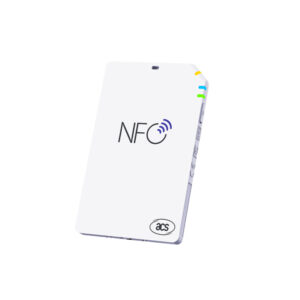Table of Contents
ToggleIntroduction
NFC (Near Field Communication) technology has woven itself into the fabric of numerous everyday gadgets, significantly enhancing their functionality and interconnectivity. Known for enabling devices to exchange data effortlessly over short distances, NFC’s utility stretches far beyond initial expectations. Let’s delve into some of the innovative and perhaps surprising ways NFC is utilized across different devices.

Smartphones: The Epicenter of Digital Convergence
Smartphones, equipped with NFC, have become pivotal in the realm of digital communication, serving as conduits for sharing data with other NFC-ready devices. Crucially, they act as the linchpin in the execution of mobile payments, facilitating swift transactions with payment terminals. Moreover, NFC enables the fluid transfer of media, contacts, and pictures between smartphones, streamlining the way we share digital content.
Gaming Consoles: A New Dimension in Entertainment
NFC technology transforms gaming consoles and controllers into portals for enhanced interactivity. By embedding NFC tags, gamers can augment their gameplay, interact with games on a deeper level, and facilitate payments within the console ecosystem, enriching the gaming experience with convenience and engagement.
Soccer Balls: Integrating Technology with Sport
NFC finds an unlikely application in the world of sports, particularly within soccer balls used in major competitions like the FIFA World Cup. These balls come with embedded NFC chips that activate challenges and competitions, offering a unique engagement for enthusiasts beyond the physical game.
Wearable Fitness Trackers: Wellness on Your Wrist
Fitness trackers and smartwatches with NFC capably turn the tide in how we monitor health and wellness. These devices can now not only track workouts and health metrics but also facilitate contactless payments and unlock personal data securely, blending fitness with convenience seamlessly.
Public Transit Systems: Simplifying Commutes
Public transportation has also embraced NFC, with many systems worldwide incorporating NFC tags or cards as a method for access and payment. Commuters can simply tap an NFC-enabled device or card to enter and exit stations, simplifying the transaction process and speeding up commutes.
Conclusion
The integration of NFC technology into a wide range of devices is testament to its flexibility, security, and efficiency. From smartphones that anchor our digital lives to gaming, sports, fitness, and even public transit, NFC is reshaping how we interact with technology and the world around us. As NFC continues to evolve, we can anticipate even more imaginative and practical applications, further intertwining the digital and physical domains for enhanced experiences.
